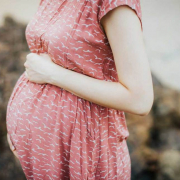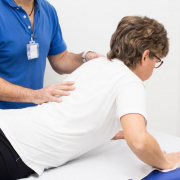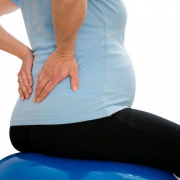“I have had scoliosis surgery. Do I face any risks with pregnancy?”
Let’s imagine the case of a healthy, active young woman who, as a teenager, had challenging scoliosis treatment, to the point of requiring surgery. Now, a few years on, she faces a new challenge: she wishes to become pregnant in order to fulfil her dreams of becoming a mother.
Pregnancy is a period that naturally brings worries as well as lots of new information that needs to absorbed in order to be able to enjoy this special time. Those with scoliosis might start wondering “Will I have problems in pregnancy because of my scoliosis and the surgery I had? Or the reverse: “Could pregnancy aggravate my back condition?”.
Let’s try and help this mother-to-be, by providing answers based on the best available scientific evidence.
Several studies in the literature have investigated the topic “Pregnancy and surgery”, examining how one might influence the other.
Let us begin by underlining one reassuring aspect: as far as has been demonstrated so far, pregnancy (be it one pregnancy or more) has no consequences (in terms of a progression or deterioration of the curve) either on the surgically fused portion of the spine or on the vertebrae that were left free (https://pubmed.ncbi.nlm.nih.gov/32272267/; https://pubmed.ncbi.nlm.nih.gov/2948962/).
Nevertheless, it is always a good idea, when possible, to seek the opinion of the surgeon who performed the surgery, in order to have answers to your queries and precise instructions to follow.
Moreover, if the patient chooses epidural pain relief and/or chooses or requires to deliver by caesarean section with epidural anaesthesia, the anaesthetist might wish to avoid the surgically-treated portion of the spine (https://pubmed.ncbi.nlm.nih.gov/32578160/ ; https://pubmed.ncbi.nlm.nih.gov/30610987/ ), even though this decision by the medical team, made in agreement with the patient, seems to be taken more as a precaution.
In general, the use of epidurals in women with previous scoliosis surgery is comparable to what is observed in scoliosis patients who have not had operative treatment. Furthermore, according to the available data, anaesthesiologists seem reluctant to perform an epidural if the surgically treated portion of the column is below the third lumbar vertebra, preferring instead to opt for general anaesthesia (https://pubmed.ncbi.nlm.nih.gov/26131384/ ; https://pubmed.ncbi.nlm.nih.gov/32578160/ ; https://pubmed.ncbi.nlm.nih.gov/30610987/ ).
With regard to possible pain or complications during pregnancy and delivery, some studies have shown that there are no differences between women who have and those who have not had scoliosis surgery (https://pubmed.ncbi.nlm.nih.gov/9391799/ ).
On the other hand, low back pain during pregnancy seems to be more frequent in surgically treated patients, although it disappears relatively quickly after delivery. ( https://pubmed.ncbi.nlm.nih.gov/30610987/ ).
All in all, then, a mother-to-be can face this exciting new chapter in her life with complete peace of mind, even though she should not forget to seek the opinion, regarding her back, of both her family doctor and a spine specialist. In this way, it is possible to prevent any pain and have the best possible experience of pregnancy and childbirth




